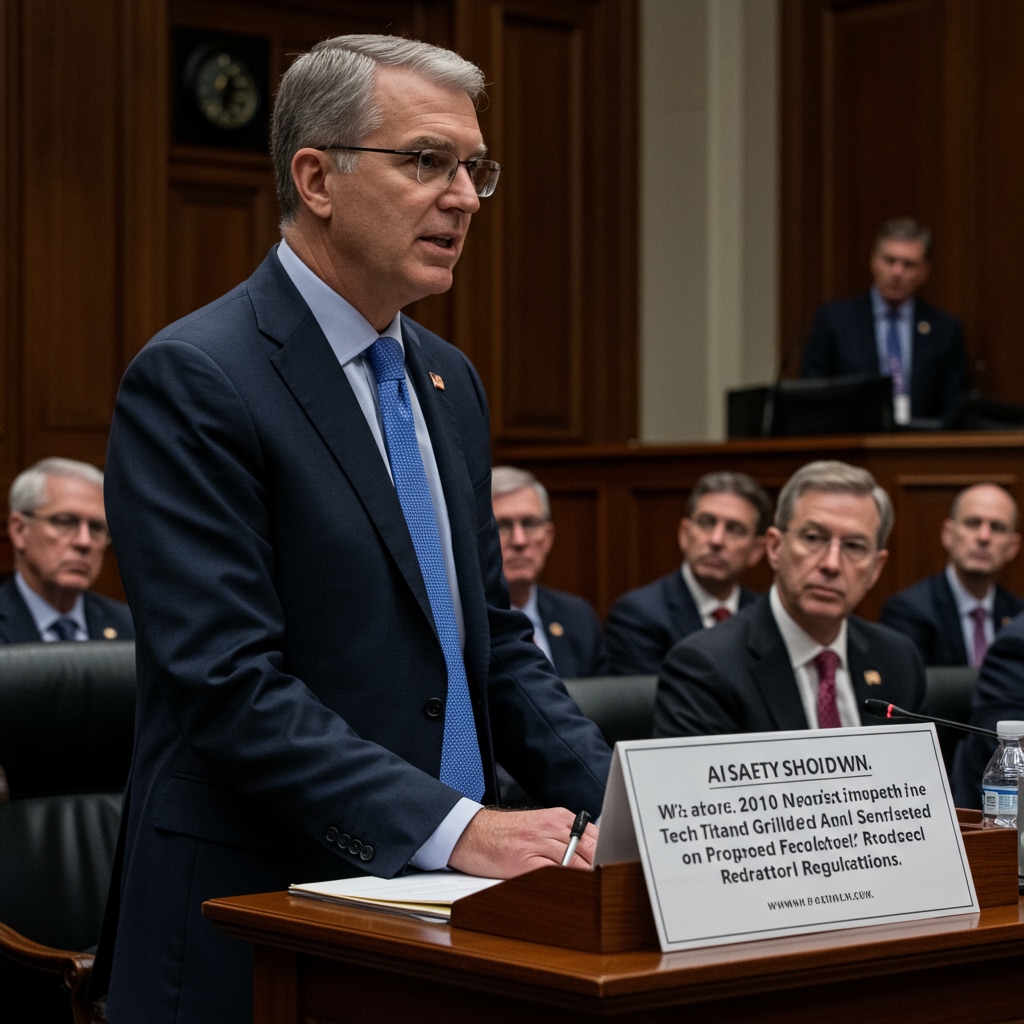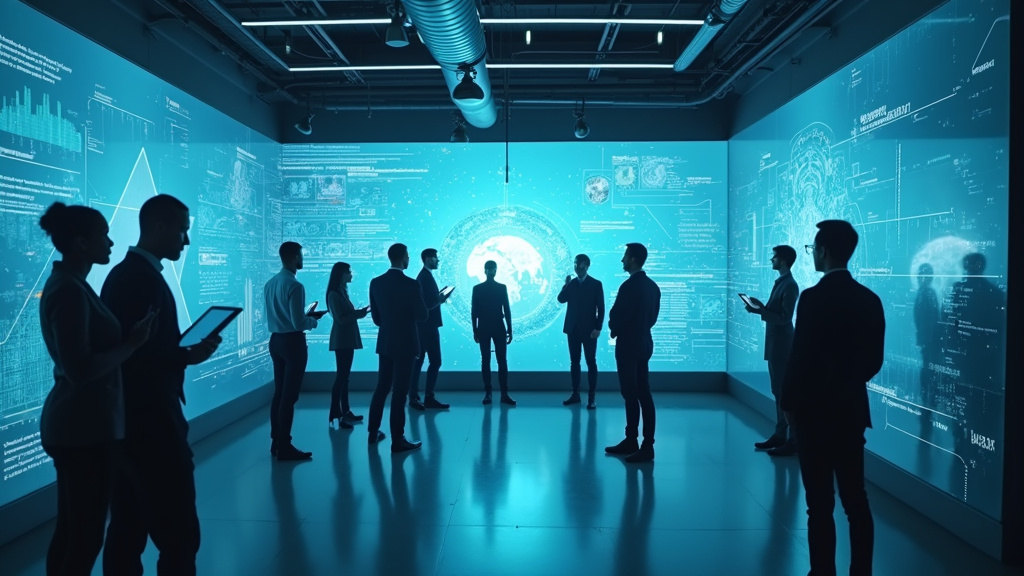Tech Titans Testify on AI Safety Bill Before Senate Judiciary Committee
Washington, D.C. – In a highly anticipated hearing highlighting the growing urgency surrounding artificial intelligence governance, the U.S. Senate Judiciary Committee convened on March 18, 2025, to hear testimony from chief executives of some of the world’s most influential technology companies. The focus of the session was the proposed “Artificial Intelligence Safety and Innovation Act,” a significant piece of bipartisan legislation aiming to establish a federal framework for AI oversight.
The hearing featured prominent figures from the tech industry, including Sundar Pichai, CEO of Alphabet (Google’s parent company), and Satya Nadella, Chairman and CEO of Microsoft. Their appearance underscored the high stakes involved as lawmakers grapple with the rapid advancements and potential societal impacts of artificial intelligence technologies.
The “Artificial Intelligence Safety and Innovation Act”: A Legislative Overview
The proposed “Artificial Intelligence Safety and Innovation Act” represents a substantial effort by lawmakers from both sides of the aisle to proactively address the challenges posed by advanced AI. As outlined in the discussions during the hearing, the bill seeks to implement comprehensive federal oversight mechanisms. Central to the legislation are mandates for mandatory safety testing of advanced AI models and stringent transparency requirements.
The scope of the bill is specifically aimed at advanced AI models, particularly those powering applications such as generative search engines and complex automated decision systems. These systems, capable of generating human-like text, images, or making critical decisions without direct human intervention, have raised significant questions about potential biases, safety risks, intellectual property, and societal disruption.
The bipartisan nature of the bill signifies a rare point of agreement in a divided Congress, reflecting a shared recognition of the need for legislative action in the face of transformative technology. The proposed regulations are intended to ensure that as AI technology proliferates, it does so in a manner that protects public safety, civil liberties, and economic stability.
Industry Leaders’ Perspectives: Support, Caution, and Concerns
The testimony from CEOs Pichai and Nadella, along with other industry representatives, offered a complex view of the proposed regulations. While expressing general support for the principle of responsible guardrails around AI development and deployment, the executives also conveyed significant reservations regarding the specific provisions of the “Artificial Intelligence Safety and Innovation Act.”
The tech leaders acknowledged the critical importance of addressing potential harms associated with AI and indicated a willingness to collaborate with policymakers. However, a recurring theme in their testimony was a strong caution against regulations that they fear could impede domestic technological advancement and undermine the global competitiveness of U.S. companies in the burgeoning AI field.
Arguments raised included concerns that overly prescriptive or premature regulations could stifle innovation, slow down the development of beneficial AI applications, and potentially grant an advantage to international competitors operating under less stringent rules. They emphasized the need for a flexible, adaptable regulatory approach that can keep pace with the rapid evolution of AI technology.
Specific Provisions Under Scrutiny
The hearing delved into several key provisions of the proposed legislation. Among the specific items discussed were the establishment of a new federal AI advisory board. This board is envisioned as a body composed of experts from various fields, tasked with providing ongoing guidance to policymakers on AI technology, risks, and potential regulatory adjustments. The composition and authority of such a board were subjects of particular interest.
Another critical aspect of the bill examined during the session was the potential for civil penalties for non-compliance with the safety standards outlined in the legislation. The nature and scale of these potential penalties, as well as the mechanisms for enforcement, were discussed as lawmakers sought to understand the practical implications and enforceability of the proposed law. Industry executives likely expressed views on the fairness and proportionality of such penalties.
The discussion around mandatory safety testing explored what such testing would entail, who would conduct it, and what standards would be applied. Transparency requirements likely touched upon topics like model capabilities, potential risks, and perhaps even the data used to train AI systems, though the exact details debated were centered on the bill’s framework.
Broader Context and Future Outlook
The Senate Judiciary Committee hearing on March 18, 2025, is part of a larger, ongoing global conversation about how to effectively govern artificial intelligence. As AI systems become more sophisticated and integrated into various aspects of life, policymakers worldwide are grappling with similar questions about safety, ethics, accountability, and innovation.
The testimony from Alphabet’s Sundar Pichai and Microsoft’s Satya Nadella before the U.S. Senate Judiciary Committee marks a crucial moment in the legislative process for the “Artificial Intelligence Safety and Innovation Act.” It underscores the tension between fostering innovation that can drive economic growth and address societal challenges, and the imperative to mitigate significant potential risks associated with powerful AI.
This hearing provided the committee with direct insights from leaders at the forefront of AI development, offering valuable perspectives as they consider refining the proposed legislation. The path forward for the bill remains subject to further debate and amendment, but the engagement of top tech executives highlights the profound implications of this regulatory effort for the future trajectory of artificial intelligence in the United States and globally.





